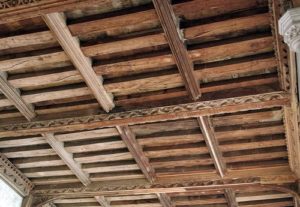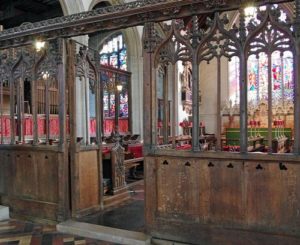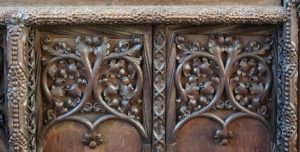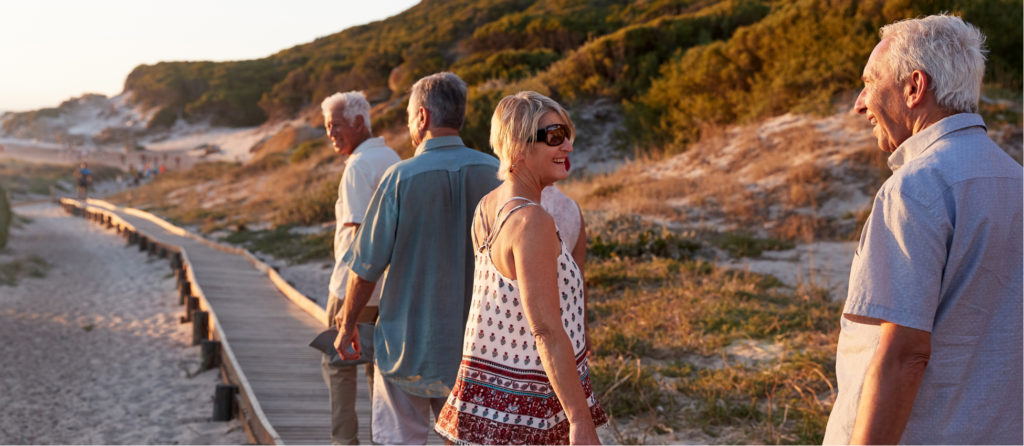St Peter and St Paul ’s church is one of the great wool churches of Suffolk, and the last to be built.
There has been a church on this site since Saxon times. The original wood church was rebuilt in stone in the 1300s. Chancel was the last to be built in about 1340. About 1480, a choir vestry was added to the east end of the church. It was then decided that this church wasn’t grand enough. A new church was started in 1486, beginning with the tower. It was financed by the de Vere family and other wealthy cloth families like the Spryngs and Branchs. The star emblem of de Vere’s appears on every face of tower and Spryng coat of arms on the parapet. Work finished with the Reformation and the chancel never got rebuilt. It is the only bit of the pre-1486 church left. Its windows are in the Decorated style. The rest of the church is Perpendicular.
Statues and decorations were removed from the church in the Reformation and there was further damage during the Civil War when Parliament ordered the destruction of altars, rood screen, crucifixes, saints and other ’superstitious’ contents. The church underwent repairs in the 19thC.
It is a splendid building built of flint and good quality Northamptonshire stone. Money was no object and surfaces are covered with flint flushwork patterns. At the west end is a huge buttressed tower with decorated parapet. There is a long nave and chancel with clerestory with open battlements. There are lower side aisles and at the east end is a small choir vestry. At the south east corner is a tall crocketed spire. The south porch has a fan vaulted roof and an oak panelled door with the de Vere boar at the corners.
The church is almost more decorated outside than inside and we were a trifle disappointed by it.
It is a big church. Pillars with pointed arches separate nave and side aisle. The surface between the arches and the clerestory is covered with carvings. There is a simple wooden roof with carved wooden figures on the ends of the beams. Panels between the beams have tiny carved bosses in the centre. Light floods in through the plain glass windows. A few fragments of medieval glass survive in the top of the windows in the side aisles.
There are three Royal coats of Arms above the south door including one for Elizabeth II, the first I have seen. A tall arch leads into the base of the tower which has a 19thC stained glass window. The carving on the 14thC font was badly damaged in the Reformation.
At the back of the south aisle are memorials to the dead of the two world wars with British Legion flags hanging above them. At the back of the north aisle is the shop, second hand books and children’s corner.
There are two chantry chapels at the east end of the side aisles which have beautiful parclose screens round them.
In the north aisle chantry is the tomb of Thomas Spryng d 1523. The south aisle chantry is John Pouder d1520.
There is a fairly simple rood screen across the chancel and side aisles which has plain panels at the base with more intricate tracery above. It extends round the north and south sides of the chancel as a parclose.
There are old choir stalls with misericords round three sides of the chancel. Stalls near the altar are newer and have lamps with small red shades. The table altar has a stone reredos behind with ogee arches, pinnacles. In the centre is IHS with the symbols for alpha and omega. The panels on either side have the Ten Commandments, Creed and Lord’s Prayer. On the south wall is a three seater sedilia.
On the floor in front of the altar is a tiny brass image which survived the attacks of the Parliamentarians, possibly because it is so small. It is a memorial to Clopton, the ten day old son of Sir Symonds D’Ewes, Lord of the Manor, who died in 1131. He is swaddled in Chrisom robes.
On the north wall of the chancel is the splendid Copinger monument, with parents kneeling and praying with the figures of there twelve children beneath the. Some are holding skulls indicating they died young.
On either side of the chancel are two more chantry chapels. That on the north commemorated Simon Branch. On the left is Thomas Spryng the Elder.
We felt this is best from the outside and must confess to being underwhelmed by the inside.
The church is open daily until 5.30 , or dusk if earlier. There is a service at 10am on Wednesdays. There is a large car park on the opposite side of the road, on the town side of the church.










